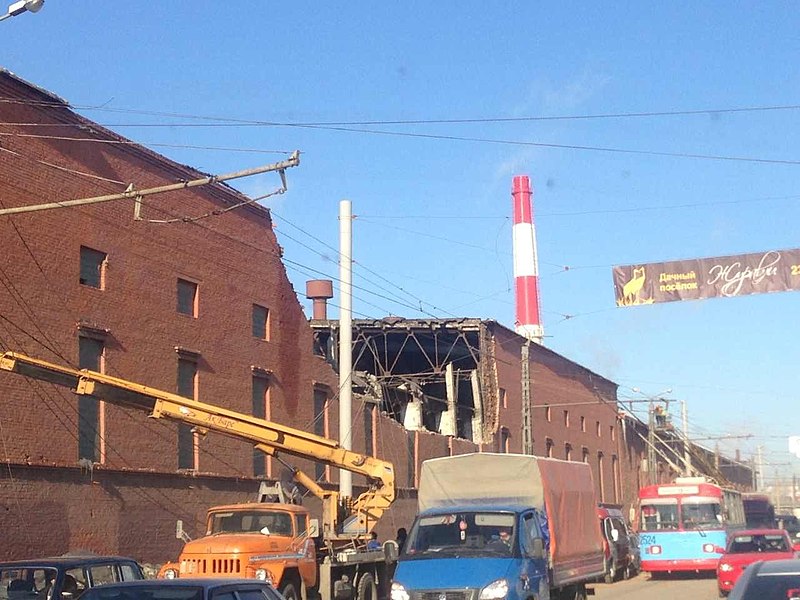The first we saw coming. We'd been tracking it for months. We knew its size (45 meters across), we knew what time it'd make its closest approach to Earth (2:25pm EST), and we knew just how close it would get (17,200 miles from Earth's surface). Our telescopes were trained and ready. Cameras were set. We got some cool images of it sailing by:
 |
| Gif via NASA |
And then...then there was the space rock we didn't see coming.
Yeah.
A 15 meter wide, 7000 ton meteor streaked across the Russian sky yesterday, traveling 18 km/s (11 miles/second, which, for perspective, is 39,600 mph).
It broke apart as it flung across the sky at an incredibly shallow angle, creating a sonic boom from its shockwave and several other loud booms from the exploding material it cast off (rock that was exploding, by the way, from the sheer heat that was involved).
It shattered glass throughout the city of Chelaybinsk, and the resulting damage injured nearly 1000 people in the area.
 |
| Photo ITAR-TASS Itar-Tass Photos/Newscom |
So here we are. Two space rocks later. Two space rocks very much NOT related to each other, as astronomers keep stressing (they had completely different orbits in space, so yeah). One of these space rocks we saw coming, one we did not.
So did someone mess up? Should we have seen this meteor coming before it struck our atmosphere?
Well, given its size...no. Not with what we currently have to work with, anyway.
As I discussed in a blog post last month, scientists are getting really good at detecting space rocks around us, but there's still a long way to go. We have found most of the "large" rocks, aka the ones over 100 meters across. But anything under 50 meters is much harder to detect. It can be done, but it will require continued funding and increased manpower to do it.
That being said, the asteroid that flew by yesterday WAS under 50 meters, and we DID detect that one. So way to go, folks over at the Minor Planet Center!
But while asteroid 2012 DA14 was 45 meters across and considered impressive to detect, remember...the Russian meteor was only 15 meters across. Very few things at that size have been detected so far, because the MPC has (understandably) been concentrating their efforts on locating the "biggies" first.
What the events of yesterday should teach us isn't that we should panic about countless massive rocks hurdling out of the sky, but rather how important it is to continue the study of space so we can be better prepared. No one should even have a question in their mind as to why we should spend money on learning about the universe beyond Earth's little bubble.
We saw one space rock coming.
We didn't see the other one.
We saw one space rock coming.
We didn't see the other one.


No comments:
Post a Comment